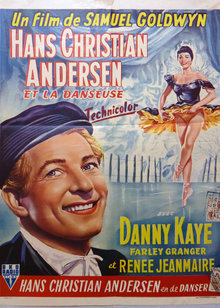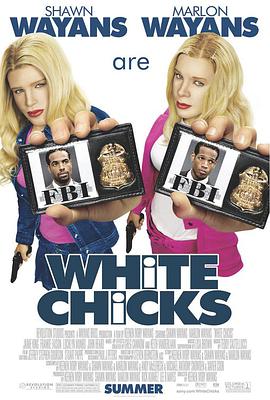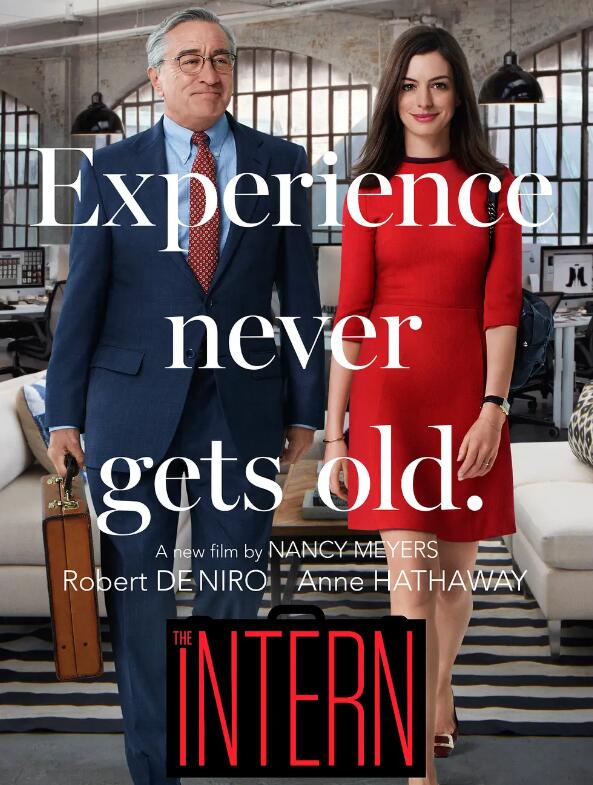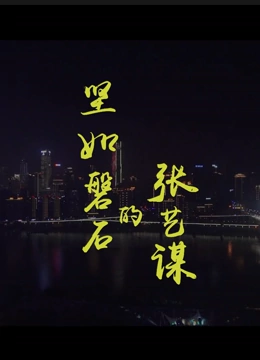- 西瓜云1
- 西瓜云2
- HD
- HD

安徒生传
- 主演:
- 丹尼·凯耶,法利·格兰杰,Zizi,Jeanmaire,Joseph,Walsh,Farley,Granger,罗兰·佩蒂
- 备注:
- HD
- 类型:
- 纪录片
- 导演:
- 查尔斯·维多
- 年代:
- 1952
- 地区:
- 北美
- 语言:
- 其他
- 更新:
- 2023-01-25 12:32
- 简介:
- 简介:一部不错的儿童电影,由丹尼·凯出演受人喜爱的丹麦作家。电影以一种为大家所接受的想像方式详细叙述了安徒生如何成为崭露头角的文学家的过程。本片以凯被要求离开小镇开始,他是镇上的鞋匠,喜欢给孩子们讲故事,以致孩子们听故事入迷,不愿去上学。 制片人高德温一直为《安徒生.....详细
简介:一部不错的儿童电影,由丹尼·凯出演受人喜爱的丹麦作家。电影以一种为大家所接受的想像方式详细叙述了安徒生如何成为崭露头角的文学家的过程。本片以凯被要求离开小镇开始,他是镇上的鞋匠,喜欢给孩子们讲故事,以致孩子们听故事入迷,不愿去上学。 制片人高德温一直为《安徒生传》著迷。十五年来他不断宣布要制作这部电影,但被一次次的推辞(贾利·古柏曾被选作男主角)。高德温花高价找人编了十六份剧本,从中挑出一份喜欢的,以17.5万美元的片酬请凯演出。凯答应后电影开拍。至於芭蕾舞女演员一角,高德温想请英国舞蹈演员MoiraShearer出演,因为她刚拍完迈克·鲍威尔的《红菱艳》(1948年)。这个故事也是从安徒生童话改编的。Shearer答应出演,但她因怀孕不得不退出,由法国舞蹈演员瑞尼·珍迈尔代替。 电影制作费用为400万美元,片中一段17分钟的芭蕾舞剧就耗费40万美元。幸运的是《安徒生传》票房高达600万美元。
There is a simplistic naiveté in this fictive family fare telling the story of Danish fairytale fabricator H.C. Andersen (Kaye) that lends the movie a tendresse even for the most hard-boiled souls. Charles Vidor’s picture gallantly beefs up hooky singing snippets (composed and lyricized by Broadway songwriter Frank Loesser) spawned out of Andersen’s world-famous stories (The Ugly Duckling, Thumbelina and The Emperor’s New Clothes) with a main through-line of Andersen’s infatuation of a prima ballerina Doro (Jeanmaire), which begets the genesis of The Little Mermaid and then is transmuted into a spectacular ballet choreographed by Parisian danseur Roland Petit,grafted onto the climax.
In its not-so-complicated story-line, Andersen is dumbed down as a happy-go-lucky cobbler, and saddled with a sidekick, the orphan boy Peter (Walsh) who becomes increasingly protective towards him as he fears that Andersen is over the moon with an ungrounded idea that he is the knight-in-shining-armor for Doro, who is married to Niels (Granger, even so bratty and uppity), the troupe’s stroppy choreographer. Their marriage comes off as habitually vacillating between lovey-dovey show-off and fiery squabbles, but is far from on the rocks as Andersen postulates, Peter witnesses and understands Doro and Niels’folie-à-deux, but fails to disabuse a hot-to-trot Andersen of his wishful thinking, so a slipshod break-up ensues, the only time Andersen appears as a heartless bastard, although in the end the hatchet will be buried in an equally rash fashion because no one should set feet in between Peter and Andersen, hooray!
Danny Kaye has a soothingly mellow voice like a balm to a jaded ear, although his earnest performance is not a showstopper but his congenial amenity is a boon to its family audience, but indeed the money shot here are the ballet sequences, melded with cinematic bravura (its ravishing setting and montage dexterity) without an overarching pomposity and indulgence à laPowell & Pressburger’s THE TALES OF HOFFMANN and interlaced with a basic narrative structure, they are condensed to light up the screen within a none-too-wearing allotted screen-time which can at once impress rubberneckers and intrigue balletomanes, for this reason alone, it has a decisive edge over other screen commodities touting the high-brow superiority.
referential points: Mervyn LeRoy’s GYPSY (1962, 7.5/10); Powell & Pressburger’s THE TALES OF HOFFMANN (1951, 5.1/10) ; Jacques Demy’s THE YOUNG GIRLS OF RICHEFORT (1967, 6.9/10)
"<>"" && "
There is a simplistic naiveté in this fictive family fare telling the story of Danish fairytale fabricator H.C. Andersen (Kaye) that lends the movie a tendresse even for the most hard-boiled souls. Charles Vidor’s picture gallantly beefs up hooky singing snippets (composed and lyricized by Broadway songwriter Frank Loesser) spawned out of Andersen’s world-famous stories (The Ugly Duckling, Thumbelina and The Emperor’s New Clothes) with a main through-line of Andersen’s infatuation of a prima ballerina Doro (Jeanmaire), which begets the genesis of The Little Mermaid and then is transmuted into a spectacular ballet choreographed by Parisian danseur Roland Petit,grafted onto the climax.
In its not-so-complicated story-line, Andersen is dumbed down as a happy-go-lucky cobbler, and saddled with a sidekick, the orphan boy Peter (Walsh) who becomes increasingly protective towards him as he fears that Andersen is over the moon with an ungrounded idea that he is the knight-in-shining-armor for Doro, who is married to Niels (Granger, even so bratty and uppity), the troupe’s stroppy choreographer. Their marriage comes off as habitually vacillating between lovey-dovey show-off and fiery squabbles, but is far from on the rocks as Andersen postulates, Peter witnesses and understands Doro and Niels’folie-à-deux, but fails to disabuse a hot-to-trot Andersen of his wishful thinking, so a slipshod break-up ensues, the only time Andersen appears as a heartless bastard, although in the end the hatchet will be buried in an equally rash fashion because no one should set feet in between Peter and Andersen, hooray!
Danny Kaye has a soothingly mellow voice like a balm to a jaded ear, although his earnest performance is not a showstopper but his congenial amenity is a boon to its family audience, but indeed the money shot here are the ballet sequences, melded with cinematic bravura (its ravishing setting and montage dexterity) without an overarching pomposity and indulgence à laPowell & Pressburger’s THE TALES OF HOFFMANN and interlaced with a basic narrative structure, they are condensed to light up the screen within a none-too-wearing allotted screen-time which can at once impress rubberneckers and intrigue balletomanes, for this reason alone, it has a decisive edge over other screen commodities touting the high-brow superiority.
referential points: Mervyn LeRoy’s GYPSY (1962, 7.5/10); Powell & Pressburger’s THE TALES OF HOFFMANN (1951, 5.1/10) ; Jacques Demy’s THE YOUNG GIRLS OF RICHEFORT (1967, 6.9/10)
"<>"暂时没有网友评论该影片"}
There is a simplistic naiveté in this fictive family fare telling the story of Danish fairytale fabricator H.C. Andersen (Kaye) that lends the movie a tendresse even for the most hard-boiled souls. Charles Vidor’s picture gallantly beefs up hooky singing snippets (composed and lyricized by Broadway songwriter Frank Loesser) spawned out of Andersen’s world-famous stories (The Ugly Duckling, Thumbelina and The Emperor’s New Clothes) with a main through-line of Andersen’s infatuation of a prima ballerina Doro (Jeanmaire), which begets the genesis of The Little Mermaid and then is transmuted into a spectacular ballet choreographed by Parisian danseur Roland Petit,grafted onto the climax.
In its not-so-complicated story-line, Andersen is dumbed down as a happy-go-lucky cobbler, and saddled with a sidekick, the orphan boy Peter (Walsh) who becomes increasingly protective towards him as he fears that Andersen is over the moon with an ungrounded idea that he is the knight-in-shining-armor for Doro, who is married to Niels (Granger, even so bratty and uppity), the troupe’s stroppy choreographer. Their marriage comes off as habitually vacillating between lovey-dovey show-off and fiery squabbles, but is far from on the rocks as Andersen postulates, Peter witnesses and understands Doro and Niels’folie-à-deux, but fails to disabuse a hot-to-trot Andersen of his wishful thinking, so a slipshod break-up ensues, the only time Andersen appears as a heartless bastard, although in the end the hatchet will be buried in an equally rash fashion because no one should set feet in between Peter and Andersen, hooray!
Danny Kaye has a soothingly mellow voice like a balm to a jaded ear, although his earnest performance is not a showstopper but his congenial amenity is a boon to its family audience, but indeed the money shot here are the ballet sequences, melded with cinematic bravura (its ravishing setting and montage dexterity) without an overarching pomposity and indulgence à laPowell & Pressburger’s THE TALES OF HOFFMANN and interlaced with a basic narrative structure, they are condensed to light up the screen within a none-too-wearing allotted screen-time which can at once impress rubberneckers and intrigue balletomanes, for this reason alone, it has a decisive edge over other screen commodities touting the high-brow superiority.
referential points: Mervyn LeRoy’s GYPSY (1962, 7.5/10); Powell & Pressburger’s THE TALES OF HOFFMANN (1951, 5.1/10) ; Jacques Demy’s THE YOUNG GIRLS OF RICHEFORT (1967, 6.9/10)














